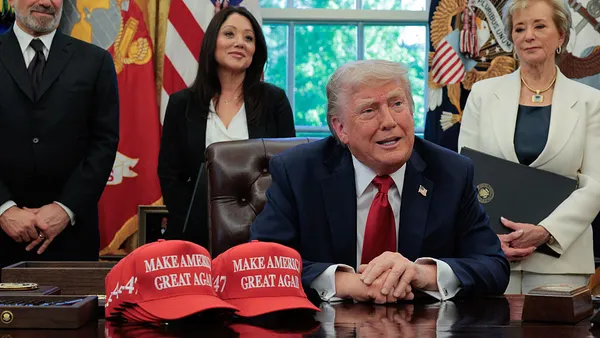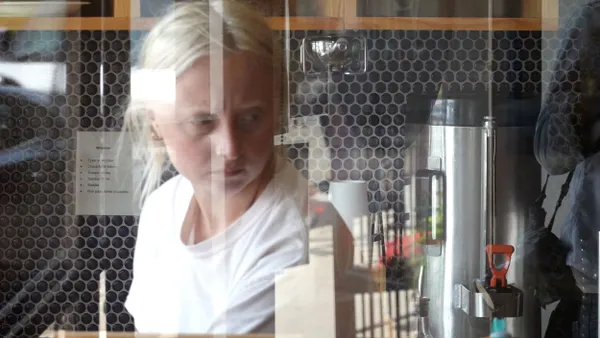Dive Brief:
- A new survey from the market research firm Customer Thermometer found that the shorthand symbols have made their way into everyday business communication. According to the company, Americans like the ability to add emotions and images to their written communications, both at work and in their personal lives.
- The survey revealed that 23% of the 1,000 respondents regularly add emoji to their work emails. Women (88%) more than men (73%) appreciated emoji for their friendlier tone. More than half of the respondents said emoji helped them avoid misunderstandings or conflict because of the conciliatory tone they set. The biggest benefit of emoji for more than a third of the respondents is that they offer a quick reply to messages.
- The top five emoji of choice are the thumbs up symbol (49%), the star (13%), the smiley face (11%) the OK hand (5%) and the heart (4%). "In marketing, there's a clear correlation — emoji equal engagement. Emails with an emoji in the subject line have better click-throughs [and] social media posts that have images have more responses," Customer Thermometer CEO Lindsay Willott said in a news release. "Words alone don't cut it anymore as they don't reflect the language changes of customers."
Dive Insight:
As Slack and other instant messaging platforms relax communications the workplace, it follows that emoji enter business language. This change is one among many induced by technology. "I can't [overstate] the significance of tech and digitization and how it has impacted engagement," Jim Link, CHRO of Randstad North America, previously told HR Dive in an interview. "That, to some people, may seem like casualness."
This is a change some workers may have been craving, recent research revealed. If they could change one thing about their jobs, workers would improve communication, after giving themselves pay bumps, of course, a Peakon study revealed last month. The report found communication promotes a sense of belonging and "paves the way for transparency, innovation and profitability."
As the workplace becomes less formal in its communication style, other changes appear to follow, including the way HR functions, experts previously told HR Dive. HR professionals are known for sticking to the rules; after all, they make and must enforce the company's policies. But experts say that a more emboldened workforce, led by millennials and Gen Zers as advocates for change, might be forcing HR to relax some of policies and procedures.
The workplace has already undergone evolutionary changes, like the shift from a hierarchal business structure to a less top-down style of management. The transition from the 9-to-5 work schedule to flexible work options might be the next biggest change in how work is done. "Change can be a really uncomfortable thing," Leah Machado, Paychex's director of HR Services, told HR Dive in a previous interview. "You really have to evaluate how you are going to run the business when you can't necessarily see everyone."











